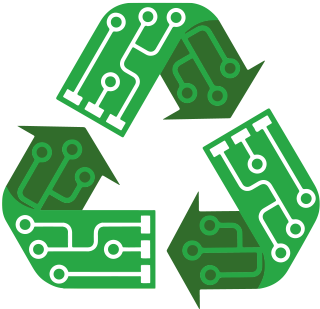Your cart is empty

Recycling
We attach great importance to the topics of sustainability, environmental protection and recycling. This page tells you what recycling options you have for electrical and electronic equipment. These may contain hazardous materials or substances that have harmful effects on people and the environment if they leak.
We will inform you in detail about your options for returning used batteries and equipment and about the currently applicable legal regulations. You will also learn what you need to bear in mind when packaging electronic devices.
WEEE Directive
Due to the ever-increasing production of electrical and electronic equipment (EEE) and the resulting generation of e-waste, the European Commission has made proposals to address this issue.
In December 2002, the EU Directive on Waste Electrical and Electronic Equipment (WEEE Directive) was subsequently adopted. The corresponding proposals were updated in the WEEE Directive 2012/19/EU.
The decisive factor for the implementation of the WEEE Directive in Germany is the Act on the Marketing, Return and Environmentally Sound Disposal of Electrical and Electronic Equipment (Electrical and Electronic Equipment Act).

Important provisions of the WEEE Directive
- All producers (or other persons selling a product within the EU) must bear the costs of taking back, processing and recycling waste equipment.
- All producers are obliged to improve the reuse or recycling of WEEE.
- The separate collection of WEEE must be ensured by the producers.
- All producers are required to inform the public about their role in the management of WEEE.
Categories of products
The WEEE Directive divides electronic products into six categories. The following overview tells you under which category the respective products fall. You can find additional information about product categories in the latest legal regulations. You can find them at www.elektrogesetz.de.
Category 1
Heat exchangers: e.g. refrigerators, freezers, air conditioners, oil radiators.
Category 2
Screens, monitors and devices with screens with a surface area of more than 100 cm²: monitors, TVs, tablets, notebooks, digital photo frames
Category 3
Lamps: e.g. LED lamps, TL tubes, energy-saving lamps, gas discharge lamps
Category 4
Appliances where at least one of the external dimensions exceeds 50cm (large appliances): washing machines, ovens, cooker hoods, electric bicycles without type approval.
Category 5
Appliances where none of the external dimensions exceeds 50cm (small appliances): toasters, toys, small consumer electronics, lights, measuring devices, hand tools.
Category 6
Small devices of information and telecommunication technology, where none of the external dimensions exceeds 50cm: Cell phones, routers, PCs, printers, navigation devices.
Sustainability and environmental protection
We care alot about sustainability and environmetal protection. We feel responsible for the environment and the people and do everything we can to save natural ressources as well as support projects in order to help replacing used ressources. All information about our measures on environmental protection can be found at Sustainability and environmental protection.

Disposal of waste equipment and used batteries
Important notes and information on the disposal of used batteries as well as explanations of the battery symbols can be found on the page Battery disposal.
Information about the disposal and return of waste electrical and electronic equipment (WEEE) can be found on the page Waste Equipment Disposal.
 Environmental protection
Environmental protection












